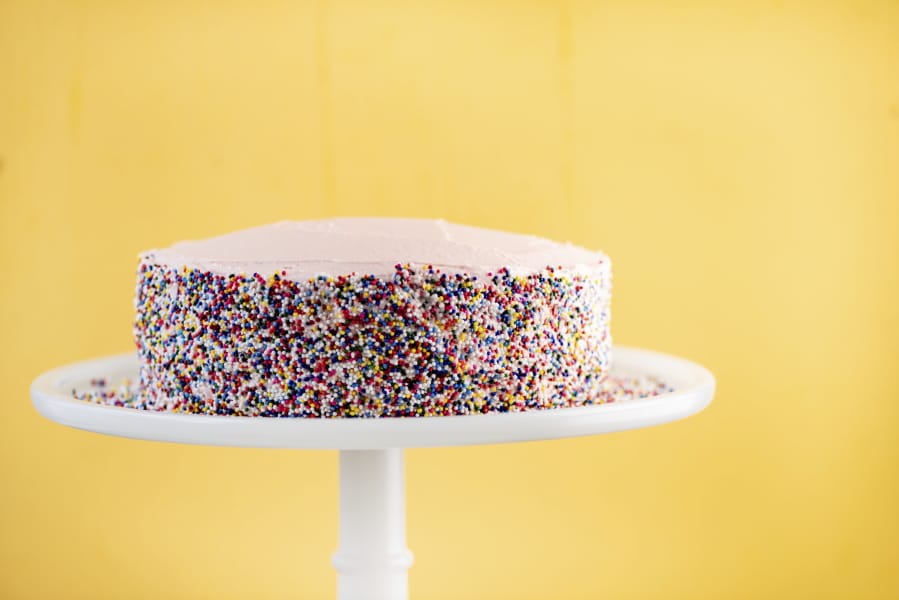Even in a pandemic, folks are getting married. And where there’s a wedding — even a small one in the backyard — there’s usually a cake.
Home bakers looking to make their own wedding cakes don’t need a fancy, multitiered tower. But how can they create something that rises above the ordinary?
First, don’t be overly ambitious, says Jocelyn Delk Adams, cookbook author and founder of the Grandbaby Cakes blog. People tend to put a lot of pressure on themselves when making wedding cakes.
“Don’t go too wild,” she cautions. Make a practice cake or two so you feel prepared for the big day.
Preparation is the key, agrees special-occasion cake baker Ron Ben-Israel, owner of Ron Ben-Israel Cakes in New York City.
“Prepare and simplify the process by writing down all of the different stages,” he says. “Separate out the pieces of the process, and write down what each will require.”
List the ingredients you will need and make sure you can find them all, since items like flour and baking powder might be in short supply.
Ben-Israel emphasizes the need to find your cake recipes, including fillings and icings, from a reliable source.
The good news is that cake layers can be baked and frozen, well wrapped, weeks in advance. Defrost the wrapped cakes in the fridge. Ben-Israel says it’s easier to assemble and decorate cakes straight from the fridge (not the freezer, because of possible condensation as they defrost).
Fillings and icings can be made days ahead. Remove them from the fridge and let them reach room temperature, then blend them again and spread at room temperature.
And shortcuts are OK. Says Adams: “If you don’t feel like you are good technically at baking, don’t be afraid to doctor up a cake mix! There are so many ways you can make a cake mix feel more special.”
One thing I learned the hard way is the importance of a crumb layer of frosting. This is the technique of applying a very thin layer of frosting to the cake and allowing it to firm up before you apply the final, thicker layer. The first layer might pick up some crumbs, but then seals them in, so the subsequent icing layer won’t pull up more crumbs and mess up the clean look of the cake. This is important when you are frosting a chocolate cake with white frosting, for instance.
Single-tier cakes are simpler, and if you are looking to do more than one tier, Ben-Israel urges you to read up on how to structure a multilayered cake. Check out videos on YouTube to learn the physics of it. When I made some rudimentary wedding cakes for friends in days past, I placed the top layer on a cardboard round (camouflaged by icing), and before placing it on top of the bottom layer, I inserted some straws cut to the height of the lower cake layer in a circle in the middle of the cake to support the top layer.
As for decoration, Ben-Israel and Adams both advise keeping it simple. Ben-Israel says you might skip the piping altogether, or if you do want to use a bag with pastry tips, “think of Keith Haring and cover the whole cake with doodles. Don’t go for straight lines.”
He also advocates for candies, sprinkles,and edible flowers (not sprayed with anything).



